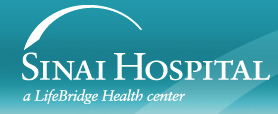A Dose Study of Doxil in a Dose Dense, 14 Day CDOP/Rituximab Regimen for Patients With Diffuse Large B-Cell Non-Hodgkin Lymphoma (NHL)> 60 Years or With Compromised Cardiac Status.
| Status: | Recruiting |
|---|---|
| Conditions: | Lymphoma |
| Therapuetic Areas: | Oncology |
| Healthy: | No |
| Age Range: | 18 - Any |
| Updated: | 4/2/2016 |
| Start Date: | May 2006 |
| Contact: | Pam Nickoles, RN, BSN |
| Email: | pnickole@lifebridgehealth.org |
| Phone: | 410-601-0729 |
Phase II Dose Study of Doxil in a Dose Dense, 14 Day CDOP/Rituximab Regimen for Patients With Diffuse Large B-Cell NHL > 60 Years or With Compromised Cardiac Status
The purpose of this study is to evaluate the feasibility and tolerability of delivering a
full dose, on time schedule of dose-dense CDOP-R (cyclophosphamide, doxil, vincristine,
prednisone, and rituximab) in NHL.
full dose, on time schedule of dose-dense CDOP-R (cyclophosphamide, doxil, vincristine,
prednisone, and rituximab) in NHL.
Diffuse large B-cell lymphoma (DLBCL) is the most frequent type of non-Hodgkin's lymphoma
with more than half of the patients being over the age of 60 years. Elderly patients with
cancer are defined by the American Society of Clinical Oncology as a "special population"
due to their disease characteristics, additional health problems, and need for aggressive
supportive care strategies to reduce morbidity and mortality. The combination of
cyclophosphamide, doxorubicin, vincristine, and prednisone (CHOP) remains as standard
therapy for the treatment of DLBCL, but elderly patients tend to tolerate the CHOP therapy
less when compared to younger patients. Cardiac toxicity, as well as decrease in blood
counts, are the most common side effects in the elderly population. For these reasons, many
doctors are reluctant to use standard combinations and doses of chemotherapy in the elderly
for fear of increased morbidity. DLBCL in the elderly is also somewhat unique in that the
elderly patients appear to have more aggressive disease and poor overall outcome. In order
to maximize the tolerability of treatment and thus potentially enhance overall treatment
success in this population, it is necessary to look at alternative treatments. This clinical
trial is based on currently accepted standard NHL therapy (CHOP-Rituximab) in which Doxil is
substituted for Adriamycin. Growth factor will be used for support of acceptable blood
counts. Chemotherapy regimens that include rituximab are now the gold standard for treatment
of DLBCL. If indeed, delivering full dose chemotherapy without treatment delays leads to
higher remission and cure rates, then this offers a significant proportion of NHL patients
who are elderly a chance for cure rather than providing treatment for comfort measures while
preserving quality of life.
with more than half of the patients being over the age of 60 years. Elderly patients with
cancer are defined by the American Society of Clinical Oncology as a "special population"
due to their disease characteristics, additional health problems, and need for aggressive
supportive care strategies to reduce morbidity and mortality. The combination of
cyclophosphamide, doxorubicin, vincristine, and prednisone (CHOP) remains as standard
therapy for the treatment of DLBCL, but elderly patients tend to tolerate the CHOP therapy
less when compared to younger patients. Cardiac toxicity, as well as decrease in blood
counts, are the most common side effects in the elderly population. For these reasons, many
doctors are reluctant to use standard combinations and doses of chemotherapy in the elderly
for fear of increased morbidity. DLBCL in the elderly is also somewhat unique in that the
elderly patients appear to have more aggressive disease and poor overall outcome. In order
to maximize the tolerability of treatment and thus potentially enhance overall treatment
success in this population, it is necessary to look at alternative treatments. This clinical
trial is based on currently accepted standard NHL therapy (CHOP-Rituximab) in which Doxil is
substituted for Adriamycin. Growth factor will be used for support of acceptable blood
counts. Chemotherapy regimens that include rituximab are now the gold standard for treatment
of DLBCL. If indeed, delivering full dose chemotherapy without treatment delays leads to
higher remission and cure rates, then this offers a significant proportion of NHL patients
who are elderly a chance for cure rather than providing treatment for comfort measures while
preserving quality of life.
Inclusion Criteria:
- 60 years old and older or 18 years old and older with significant/potential cardiac
morbidity
- Diagnosis of diffuse large B cell lymphoma, Ann Arbor stage I-IV, any International
Prognostic Index (IPI) score.
- Previously untreated
- New York Heart Association (NYHA) classification of Class III or better
- Baseline ejection fraction (EF) > 25%
- Eastern Cooperative Oncology Group (ECOG) performance status (PS) 0-3
- Unless attributable to NHL: absolute neutrophil count (ANC) > 1500/uL, platelets >
100,000/uL; hemoglobin > 9.0 g/dl
- Bilirubin < 1.5 mg/dL (unless related to lymphoma)
- Hepatic: transaminases < 2.5 x upper limit of normal (ULN) (unless related to
lymphoma)
- Creatinine < 2.5 mg/dl (unless related to lymphoma)
Exclusion Criteria:
- No HIV+ individuals
- No primary central nervous system (CNS) lymphoma
- No pregnant or lactating women
- No serious active infection
- History of prior malignancy within the last 5 years other than subject's original
cancer diagnosis listed in inclusion criteria with the exception of curatively
treated basal cell carcinoma.
We found this trial at
2
sites
Click here to add this to my saved trials
Sinai Hospital of Baltimore Sinai Hospital of Baltimore provides a broad array of high-quality, cost-effective...
Click here to add this to my saved trials
